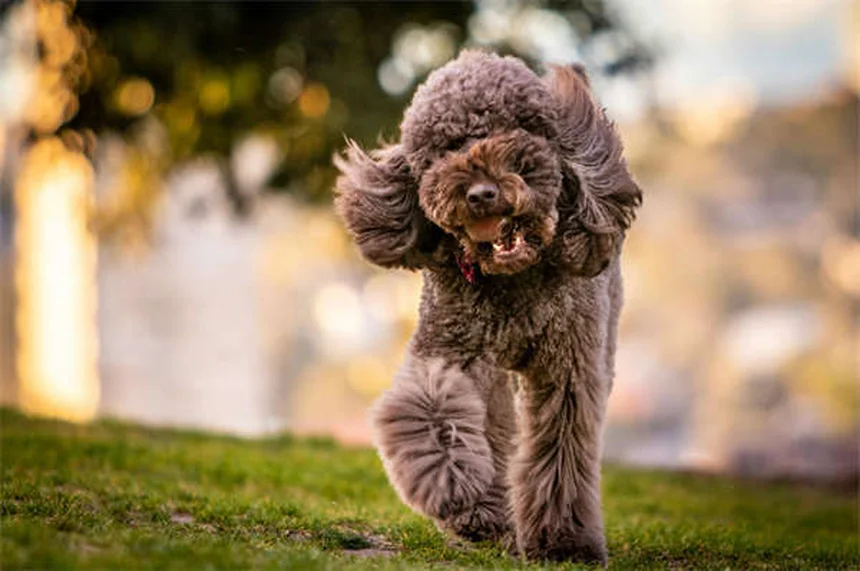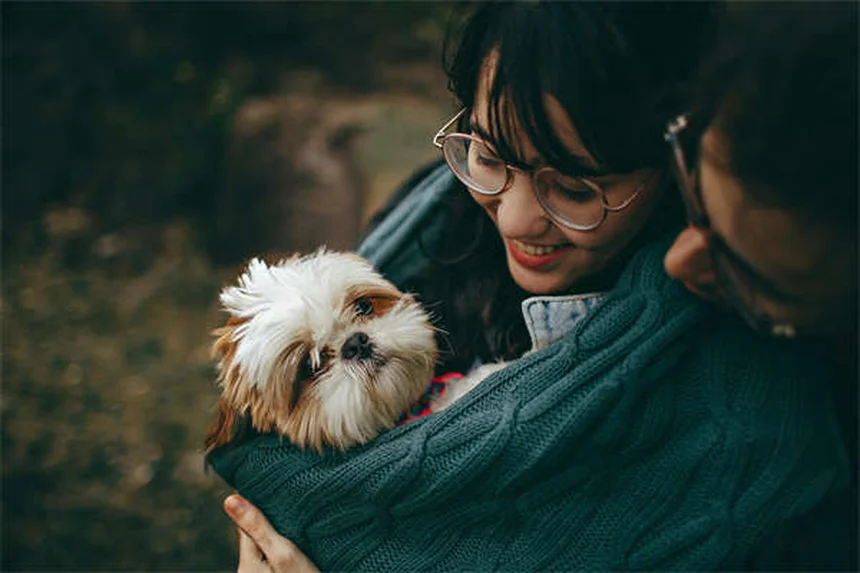How do dogs sweat? The answer might surprise you! Unlike humans who sweat all over, dogs primarily sweat through their paw pads. Those cute little paws contain merocrine glands that release moisture when your pup gets hot or nervous. But here's the kicker - this isn't their main cooling method! Panting is actually your dog's superpower, working like a built-in air conditioning system. I've learned through years with my Labrador that understanding how dogs regulate temperature is crucial for keeping them safe in summer. Let me break down the fascinating science behind canine cooling and share some life-saving tips I've picked up along the way.
E.g. :10 Most Popular Puffer Fish Types for Your Aquarium
Advertisement
- 1、The Science Behind How Dogs Sweat
- 2、Dog Cooling Systems Compared to Humans
- 3、To Shave or Not to Shave?
- 4、Heatstroke: The Silent Summer Killer
- 5、Keeping Your Best Friend Cool
- 6、Cool Products Your Dog Will Love
- 7、Final Thoughts on Canine Cooling
- 8、Beyond Paws: Other Fascinating Ways Dogs Regulate Temperature
- 9、How Climate Affects Different Dog Breeds
- 10、Water: More Than Just Hydration
- 11、Behavioral Cooling Strategies
- 12、Urban Heat Challenges for Dogs
- 13、Evolutionary Marvels of Canine Cooling
- 14、FAQs
The Science Behind How Dogs Sweat
Paws: The Secret Sweat Zones
Ever noticed your dog leaving damp paw prints on hot days? That's because dogs primarily sweat through their paw pads, unlike humans who sweat all over. Their merocrine glands - tiny sweat factories in their paws - kick into action when they're hot or stressed.
Here's something fascinating: while human sweat mixes with bacteria to create body odor, dog paw sweat is completely odorless to us. But wait - there's more! Dogs actually have a second type of sweat gland (apocrine glands) covering their entire body. These don't help with cooling but produce pheromones for doggy communication. Imagine your pup sending secret messages through their sweat!
Why Panting Beats Sweating
If sweating isn't their main cooling method, what is? Panting is their superpower. When dogs pant, they're creating an internal air conditioning system. The rapid breathing causes moisture in their airways to evaporate, cooling them from the inside out.
Think about it this way: on a 90°F day, you might sweat buckets while your dog barely leaves damp footprints. That's because their cooling system works completely differently than ours. Next time you see your pup panting after playtime, remember they're basically running their own personal cooling fan!
Dog Cooling Systems Compared to Humans
| Cooling Method | Dogs | Humans |
|---|---|---|
| Primary Method | Panting | Sweating |
| Sweat Glands | Only in paws (merocrine) | All over body (eccrine) |
| Secondary Method | Vasodilation (ear/face) | Vasodilation (skin) |
 Photos provided by pixabay
Photos provided by pixabay
The Magic of Vasodilation
Ever notice your dog's ears turning pink when they're hot? That's vasodilation at work! Blood vessels expand, bringing warm blood closer to the skin's surface where it can cool down. The ears and face become natural radiators, helping regulate body temperature.
This explains why floppy-eared breeds might struggle more in heat - their ear design actually traps heat! Breeds like Basset Hounds have less surface area for this cooling method to work effectively. Meanwhile, pointy-eared German Shepherds have built-in cooling fins!
To Shave or Not to Shave?
The Double Coat Dilemma
Here's a hot weather myth busted: shaving double-coated dogs does more harm than good. That fluffy Golden Retriever coat? It's actually insulation against heat and sun protection rolled into one. The outer guard hairs reflect sunlight while the undercoat creates insulating air pockets.
I learned this the hard way when I shaved my Husky mix one summer. Bad idea! Without his protective coat, he actually overheated faster. The fur acts like your home's insulation - keeping heat out in summer and warmth in during winter.
Single Coats Get a Pass
Now, breeds like Poodles or Yorkies? Different story. Their single-layer coats don't provide the same thermal regulation, so summer trims can help them stay comfortable. Just don't go too short - you still want to protect their skin from sunburn!
Here's a quick test: if your dog's coat feels like a thick winter jacket, leave it alone. If it's more like a light sweater, a trim might help. When in doubt, ask your groomer what's best for your pup's specific breed and coat type.
Heatstroke: The Silent Summer Killer
 Photos provided by pixabay
Photos provided by pixabay
The Magic of Vasodilation
Did you know a car can become deadly for dogs in just 10 minutes on an 85°F day? Heatstroke sneaks up fast, and recognizing the signs could save your dog's life. Watch for excessive panting, bright red gums, stumbling, or thick drool - these are red flags.
I'll never forget the time my neighbor's Labrador collapsed during a July hike. We rushed him to the vet just in time - his temperature had skyrocketed to 107°F! The vet explained that at 106°F, organs start shutting down. Scary stuff, but knowing what to look for made all the difference.
Brachycephalic Breeds: Extra Vulnerable
Why are pugs and bulldogs at higher risk? Their adorable smooshed faces come with a dangerous trade-off: restricted airways make panting less effective. These breeds can overheat at temperatures that wouldn't bother other dogs.
If you own a flat-faced breed, you need to be extra vigilant. Keep walks short on warm days, always have water available, and consider cooling vests. Their cute faces just aren't built for heat regulation like other dogs!
Keeping Your Best Friend Cool
Summer Survival Tips
Here's my golden rule: if the pavement is too hot for your bare feet, it's too hot for your dog's paws. Try the 7-second test - place your hand on the pavement for seven seconds. If it's uncomfortable for you, it's dangerous for them.
Some pro tips I've learned:
- Freeze chicken broth cubes for a cooling treat
- Use a kiddie pool in the shade for instant relief
- Schedule walks for early morning or late evening
- Invest in a cooling mat for indoor naps
 Photos provided by pixabay
Photos provided by pixabay
The Magic of Vasodilation
Here's a question that might surprise you: Did you know cracking windows does almost nothing to keep cars cool? Studies show interior temperatures still reach dangerous levels within minutes, even with windows down. The safest option? Leave your dog at home on warm days.
If you must travel together, plan ahead. Bring a portable water bowl, park in shade, and never leave them alone - not even "just for a minute." I keep a battery-operated fan in my car for summer road trips with my beagle. A little preparation goes a long way in keeping your furry copilot safe!
Cool Products Your Dog Will Love
Must-Have Summer Gear
After trying countless cooling products, here are my top picks:
- Cooling vests (the evaporative kind, not the ice pack type)
- Elevated mesh beds for maximum airflow
- Portable water bottles with built-in bowls
- Paw protection wax for hot sidewalks
DIY Cooling Solutions
Don't want to spend a fortune? Try these budget-friendly ideas:
- Wet bandanas (tied loosely around the neck)
- Frozen Kong toys stuffed with peanut butter
- Tile or concrete floors make great natural cool spots
- Rotating fans placed at dog height
Final Thoughts on Canine Cooling
Understanding how dogs regulate their temperature helps us keep them safe and comfortable. From their unique paw-sweating system to their amazing panting abilities, dogs have evolved clever ways to beat the heat. As pet parents, it's our job to support these natural mechanisms while watching for danger signs.
What's the most important takeaway? Never assume your dog cools down the same way you do. Their biology works differently, and recognizing these differences could literally save their life. Now go enjoy the summer with your pup - just remember to keep it cool!
Beyond Paws: Other Fascinating Ways Dogs Regulate Temperature
The Tail's Cooling Secret
You know what's wild? A dog's tail isn't just for wagging - it's actually part of their temperature regulation system! Blood vessels in the tail help release excess heat, especially in breeds with thick, bushy tails. That's why you might see dogs sleeping with their tails spread out on cool surfaces during summer.
Here's something even more interesting: Arctic breeds like Siberian Huskies actually use their tails as natural face warmers in winter! They curl up with their tails covering their noses to conserve heat. Talk about a multi-purpose tool - from summer cooling to winter warming!
Belly Flops Aren't Just Cute
Ever wonder why your dog suddenly flops onto their belly on a tile floor? That's not just random behavior - they're strategically cooling their core. The belly has less fur coverage and major blood vessels close to the surface, making it the perfect spot for rapid heat transfer.
I noticed this with my Labrador last summer - she'd seek out the coolest spots in the house and press her entire belly against them. Turns out dogs are basically living thermostats, constantly adjusting their position to maintain the perfect body temperature!
How Climate Affects Different Dog Breeds
| Climate Type | Best Suited Breeds | Special Considerations |
|---|---|---|
| Hot & Dry | Saluki, Pharaoh Hound | Short coats, lean bodies, large ears |
| Hot & Humid | American Hairless Terrier | No coat to trap moisture |
| Cold Climates | Alaskan Malamute, Samoyed | Thick double coats protect from extreme cold |
Desert Dogs: Built for Heat
Have you ever noticed how many desert-origin breeds have large ears? That's no coincidence! Those big ears act like natural radiators, helping release body heat more efficiently. Breeds like the Saluki have evolved over centuries to thrive in scorching temperatures.
Here's a fun fact: the Basenji, an African breed, actually grooms itself like a cat to stay cool! Their fastidious cleaning helps regulate body temperature by spreading saliva across their coat for evaporative cooling. Nature's original air conditioning system!
Northern Breeds in Summer
Ever wonder how sled dogs survive summer? Their coats are actually designed for temperature regulation year-round. That thick fur protects from both extreme cold and intense sun. The undercoat sheds seasonally, creating air pockets that insulate against heat.
I once met an Iditarod musher who explained something fascinating - their dogs often sleep on top of snow banks during races to avoid overheating, even in sub-zero temperatures! Their metabolism generates so much heat that they need cooling even in Arctic conditions.
Water: More Than Just Hydration
The Swimming Advantage
Why do some dogs love water while others hate it? Turns out, water-loving breeds often have physical adaptations that make swimming an effective cooling method. Webbed feet, water-resistant coats, and strong tails all contribute to making aquatic cooling comfortable.
Take the Portuguese Water Dog - their curly coat actually traps air for buoyancy while protecting skin from cold water. Meanwhile, breeds like Bulldogs struggle in water because their body structure makes swimming physically difficult. It's not just preference - it's physiology!
Drinking Habits in Heat
Did you know dogs adjust their water intake based on temperature? They instinctively drink more when they need additional cooling. But here's the catch - they can't always access water when they need it most. That's why it's crucial to offer frequent water breaks during hot weather.
I learned this lesson when my dog started drinking from puddles during walks. The vet explained he was likely dehydrated - now I carry a collapsible water bowl everywhere. Pro tip: adding ice cubes can encourage drinking while providing extra cooling!
Behavioral Cooling Strategies
The Art of the Siesta
Ever notice how dogs sleep more during hot days? That's not laziness - it's smart energy conservation! Reducing activity lowers their metabolic heat production, helping maintain a safe body temperature. Many desert animals use this same strategy.
My neighbor's Greyhound taught me this - she becomes practically nocturnal in summer, sleeping through the hottest hours and becoming active at dawn and dusk. It's amazing how animals naturally adapt their routines to beat the heat!
Digging for Comfort
Why do some dogs dig holes to lie in? That's natural air conditioning at work! The soil below surface level stays significantly cooler, providing relief from scorching temperatures. This behavior is especially common in breeds with digging instincts.
I used to get mad at my Terrier for ruining the garden, until I realized he was just trying to stay cool. Now I provide a designated digging area with moist sand - problem solved, and he stays comfortable too!
Urban Heat Challenges for Dogs
Concrete Jungle Problems
Have you considered how city living affects dogs' cooling abilities? Paved surfaces radiate heat long after sunset, creating dangerous microclimates. Tall buildings block cooling breezes, while limited green space reduces access to cool grass.
I witnessed this in my downtown neighborhood - the local shelter reported more heat-related emergencies from city dogs than rural ones. Simple solutions like rooftop gardens or tree-lined streets could make a huge difference for our urban pups!
The Air Conditioning Dilemma
Here's a question that might surprise you: Can dogs become dependent on air conditioning? While AC provides immediate relief, overuse can actually reduce their natural heat tolerance. Gradual exposure to warmer temperatures helps maintain their natural cooling abilities.
That said, certain breeds absolutely need climate control - but for most dogs, moderate temperature fluctuations are healthy. I keep my home at 78°F in summer - comfortable for humans while allowing my dog to maintain his natural thermoregulation!
Evolutionary Marvels of Canine Cooling
From Wolves to Pugs
How did domestication change dogs' cooling abilities? Selective breeding has dramatically altered their natural cooling systems. While wolves efficiently regulate temperature across seasons, many modern breeds struggle due to human preferences for certain physical traits.
It's fascinating to compare a wolf's temperature regulation to a Bulldog's - one is nature's perfect design, the other struggles to breathe on a warm day. This makes me extra careful with brachycephalic breeds during summer months!
Future of Canine Cooling
What innovations might help dogs in our warming climate? Researchers are developing everything from smart cooling collars to phase-change material beds. Some veterinarians even suggest selective breeding programs to improve heat tolerance in vulnerable breeds.
I recently tested a new cooling vest that uses NASA-inspired materials - my dog actually chooses to wear it on hot days! As temperatures rise globally, these innovations could become essential for canine health and comfort.
E.g. :Do Dogs Sweat? How Your Dog Keeps Their Cool | Hill's Pet
FAQs
Q: Do dogs sweat like humans do?
A: No, dogs don't sweat like humans at all! While we have sweat glands covering our entire body, dogs only have functional sweat glands in their paw pads. That's why you might notice damp paw prints on hot days. The rest of their body has apocrine glands that produce pheromones rather than sweat for cooling. I remember being shocked when my vet explained this - it completely changed how I approach keeping my dog cool in summer. Their primary cooling method is actually panting, which works like an evaporative cooler for their whole system.
Q: Why do dogs pant instead of sweating?
A: Panting is far more effective for dogs than sweating would be because of their fur coverage. When dogs pant, they're rapidly moving air across their moist tongue and respiratory tract, causing evaporation that cools their blood. This process can lower their body temperature much faster than sweating through small paw pads could. I've timed my dog's panting after playtime - he can take 300-400 breaths per minute when really working to cool down! The moisture evaporation from panting is similar to how sweating cools humans, just using different anatomy.
Q: Can shaving my dog help keep them cool?
A: This depends entirely on your dog's coat type. For double-coated breeds like Huskies or Golden Retrievers, shaving actually removes their natural insulation against heat. I learned this the hard way after shaving my Shepherd mix one summer - he overheated faster without his protective coat! Single-coated breeds like Poodles can benefit from summer trims, but never shave down to the skin. The fur protects against sunburn and helps regulate temperature. A good rule of thumb: if your hand can't easily feel their skin through the fur, they probably need that coat for temperature control.
Q: What are the first signs of heatstroke in dogs?
A: Watch for excessive panting, bright red gums, and stumbling - these are the earliest warning signs. Having rushed my neighbor's Lab to the vet for heatstroke, I can tell you it progresses frighteningly fast. Other red flags include thick drool, vomiting, and confusion. Brachycephalic (flat-faced) breeds show these signs even faster because their airways are less efficient. Remember, by the time a dog's temperature hits 106°F, organs are already at risk. If you suspect heatstroke, get to a vet immediately while cooling your dog with room-temperature (not cold) water.
Q: How can I keep my dog cool in summer?
A: Prevention is key for summer safety! My top tips: walk during cooler hours, provide constant shade and water, and use the "7-second pavement test" (if it's too hot for your hand, it's too hot for paws). I swear by cooling vests for my active dog and always carry a collapsible water bowl. Frozen treats made with chicken broth are a hit in our house too! Most importantly, never leave dogs in cars - temperatures skyrocket dangerously fast, even with windows cracked. With some planning, you and your pup can enjoy summer safely.

